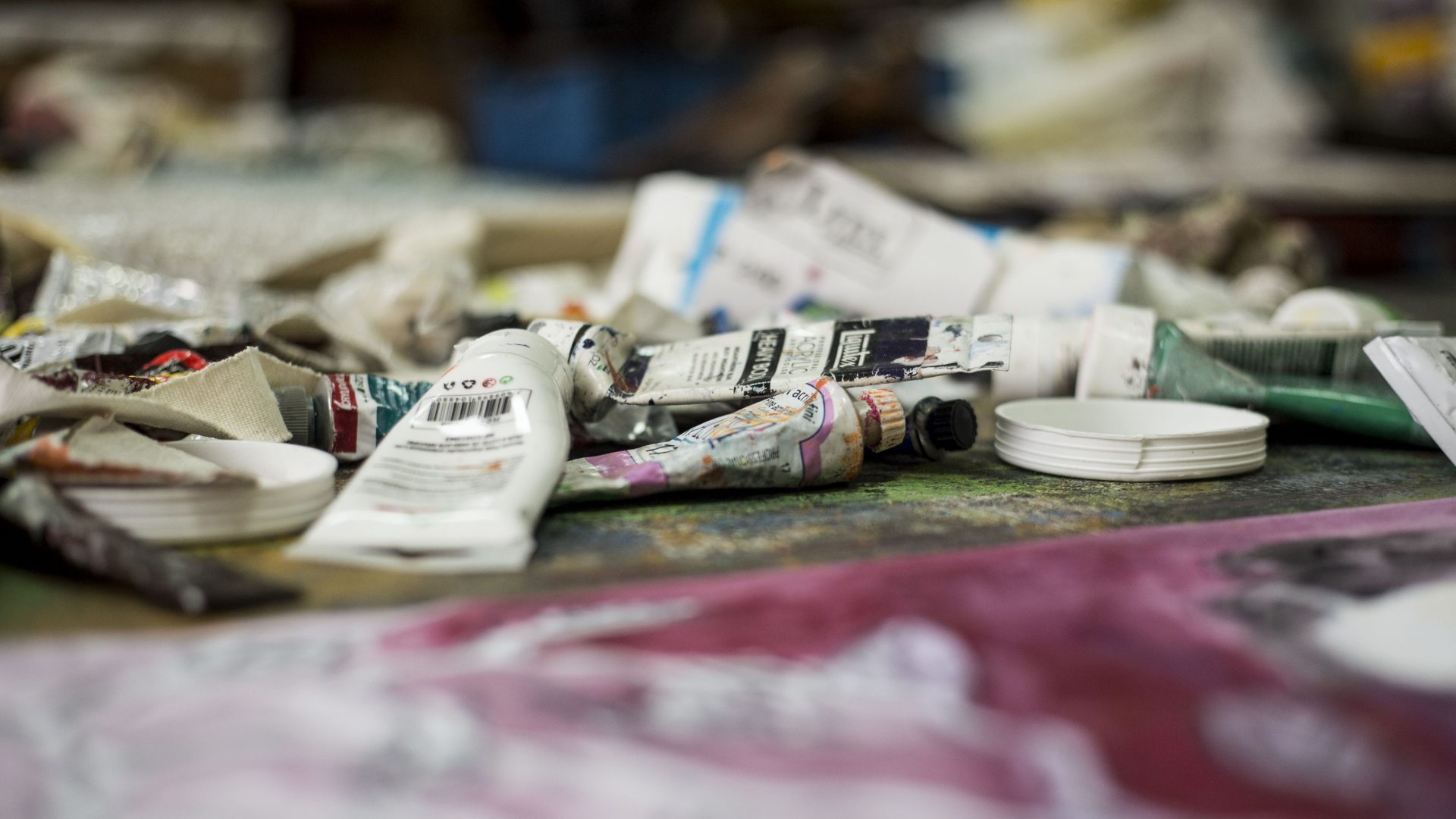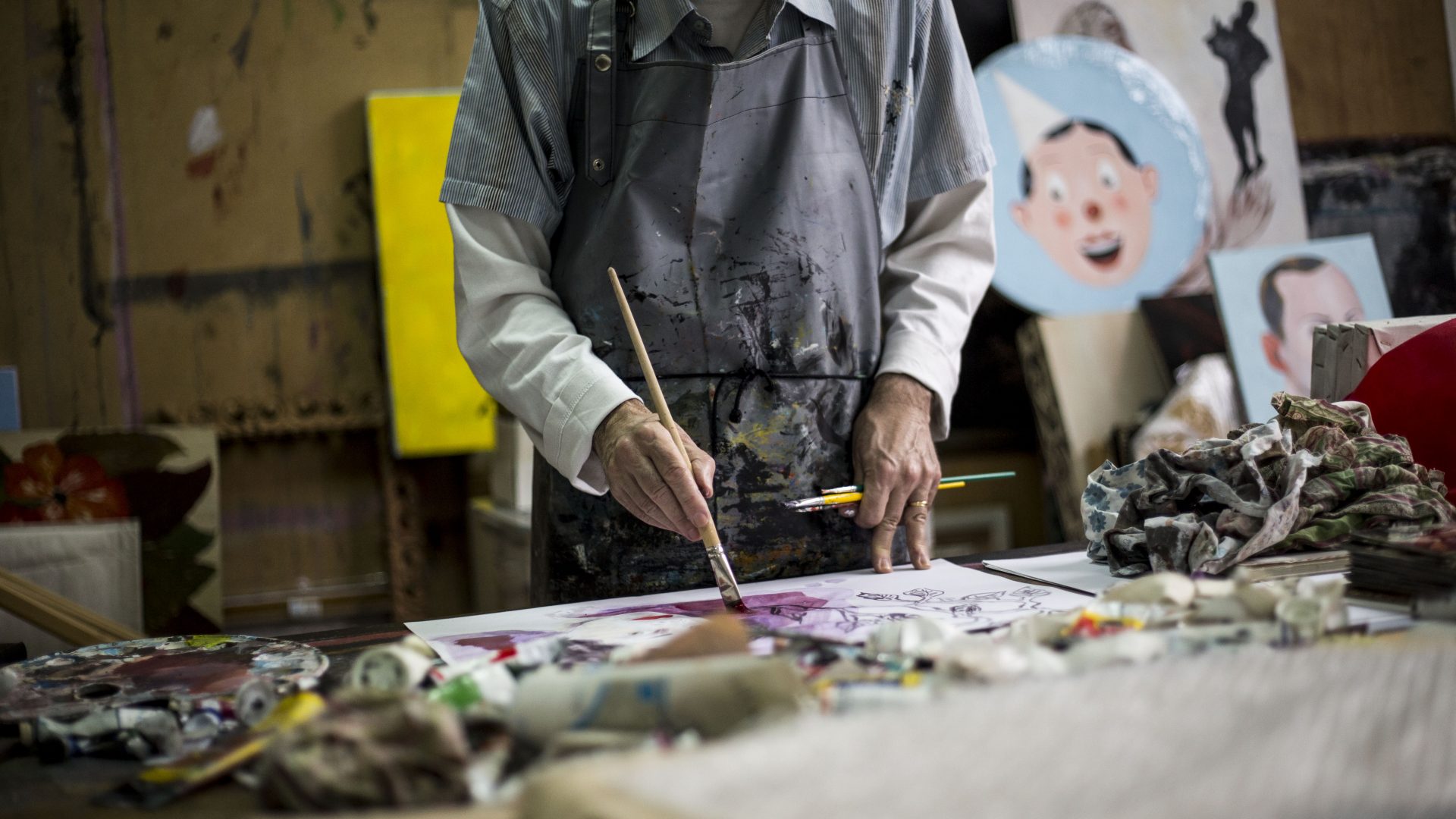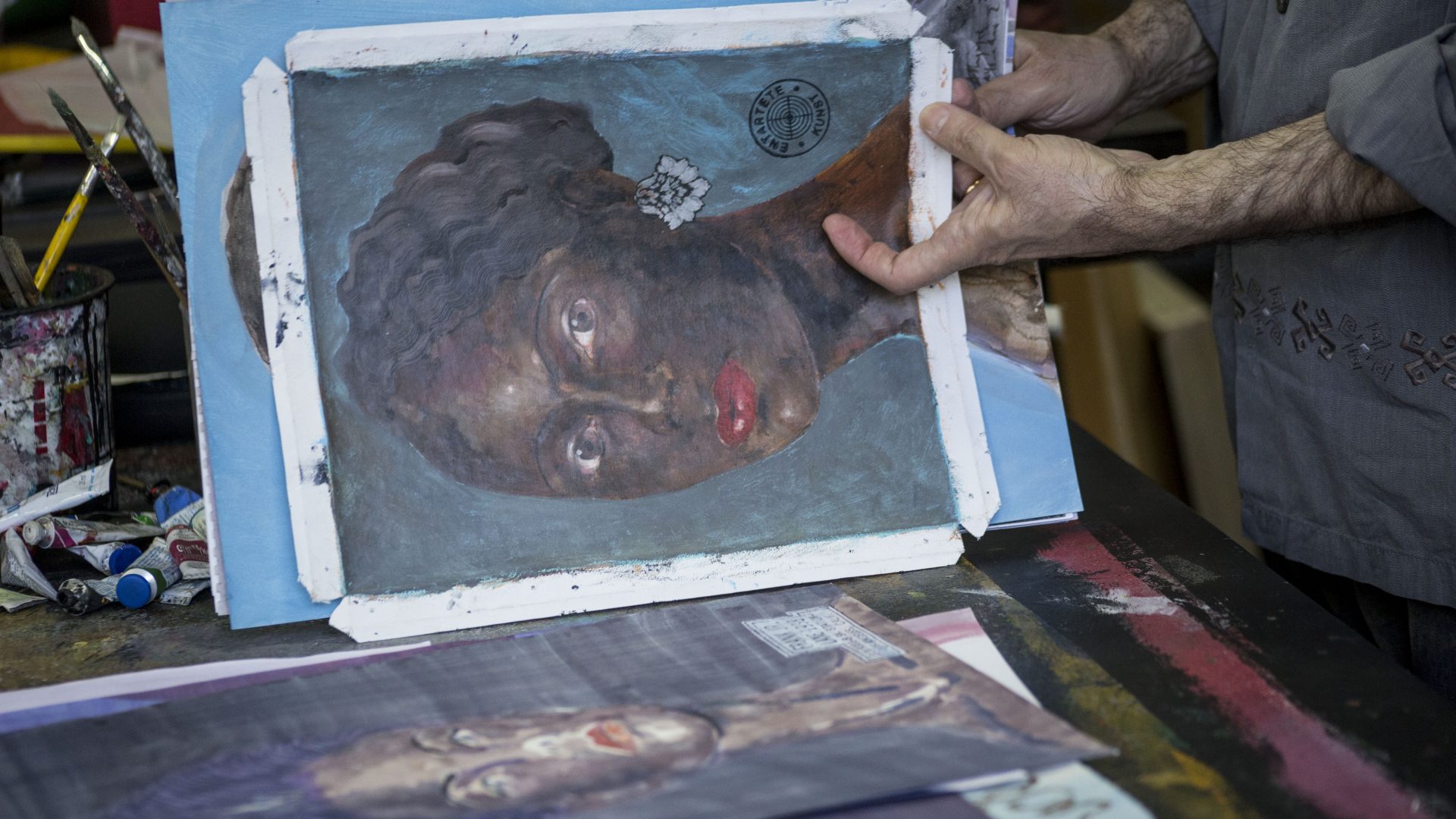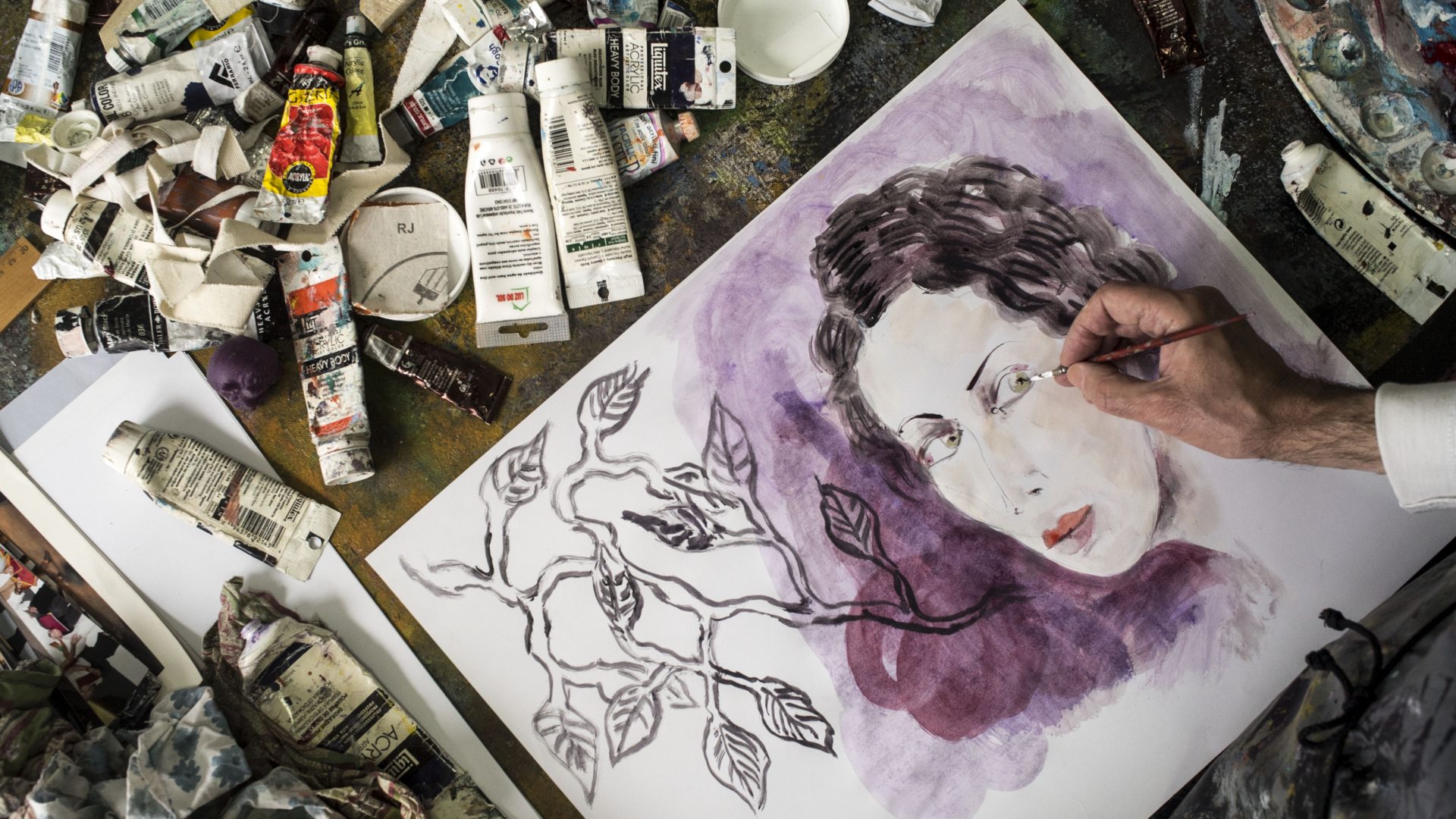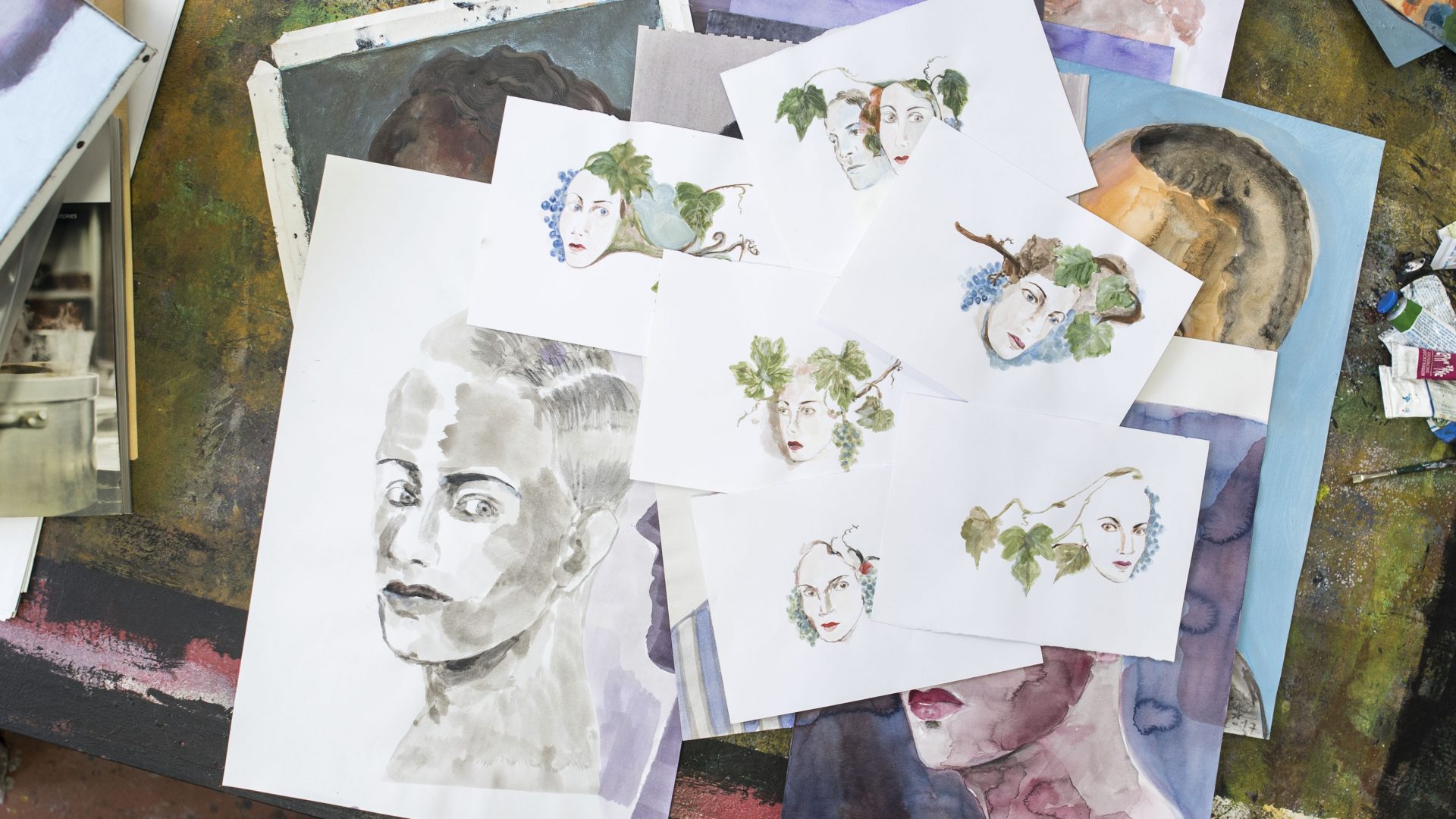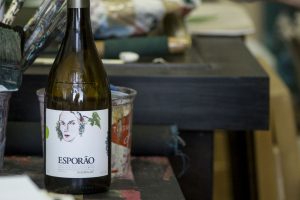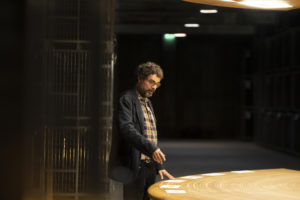The window at the end of the room provides the light Albuquerque needs to work at the large table where he spreads out his watercolours and paintbrushes. Always standing – for the sensation of moving with the paints and materials – he paints and forgets the world outside. There are no watches here, few visitors, and problems or worries stay on the other side of the door. The time is told by the sun, which is often wrong, especially in the summer.
«Painting has always been like breathing for me. Very natural. For as long as I can remember, I’ve always painted, sketched, made things with my hands»
The fact that he was born in Trancoso, a small city in the district of Guarda, didn’t keep Albuquerque from dreaming and finding his sense of the arts. He was transported to other places through the numerous books his father had at home, and from these he would also absorb the culture that, in the 1950s, didn’t exist outside his doors – in his home town.
«In Trancoso there were the books my father had at home. We had many books and they would transport me. In terms of painting, we only had some paintings by Eduarda Lapa, who is a painter from Trancoso, and a copy of a Picasso.»
At the age of 10 he moved to Coimbra, which already had cinema, theatre, ballet, opera – everything he was interested in and curious to experience. It was a new world where he felt more at home. He began by taking an engineering course but then decided to dedicate himself entirely to painting and art. In 1970, he joined the Círculo de Artes Plásticas (Visual Arts Circle) in Coimbra, the place that gave him the freedom of thought and values that mark his identity. There, he rubbed elbows with Ângelo de Sousa, João Dixo and Alberto Carneiro who, with him, made important headway for the arts in Portugal.
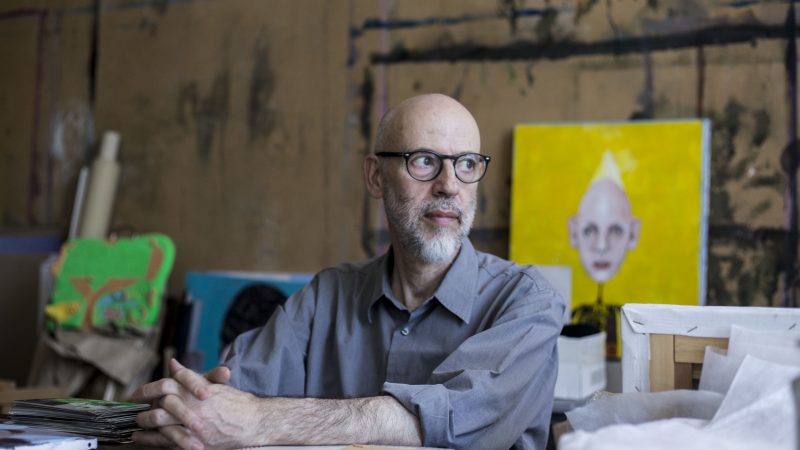
For him, his first performance was one of the most striking. In 1974, for the anniversary of the Círculo de Artes Plásticas de Coimbra, he produced thousands of paper flowers and distributed them on the way from Porto to Coimbra. “Art is beautiful, everything is beautiful” was the slogan for the construction of a giant carpet of flowers. From that moment on, he never stopped performing and using his body as a complement to painting.
«The performances led to the desire to paint self-portraits, because for me, self-portraits are me telling a story about my body. It is something I do because each self-portrait tells my story. I am saying exactly what I am. And the story of my body. The presence of my body not only in the work but also physically.»
Albuquerque presents a certain anarchy in spaces, in the techniques he uses and even how he presents himself but, when he begins a creative process, it is in his deep search for the elements that he shows his methodical and almost “obsessive” side.
When he was invited by Esporão to create the new labels for Esporão Reserva and Esporão Private Selection, Albuquerque wanted to bring that memory of wine to the memory of the label, in other words, he wanted the label to be experienced like the wine. He wanted it to have a memory when we look at it, to understand its story, which doesn’t end with the wine itself, but continues on in art, in design and in the context it is a part of.
His own story and relationship with wine were very important during the creative process. Although there wasn’t much of a wine culture in the Beira Alta region in 1953, there was a wine cellar in his house where his father vinified grapes brought by friends from the region, and created his own handwritten labels.
«There was always wine in our house and I’ve known how wine is made since I was a child. And after some time, I also started tasting and appreciating wine, especially red wine. I don’t like any other alcoholic beverage and I think I enjoy wine not only for its flavour, but also because of the respect I have for its story until it reaches the bottle. This is why I never lose moderation, I don’t want that moment of pleasure to be lost in my body, my mind and my memory.»
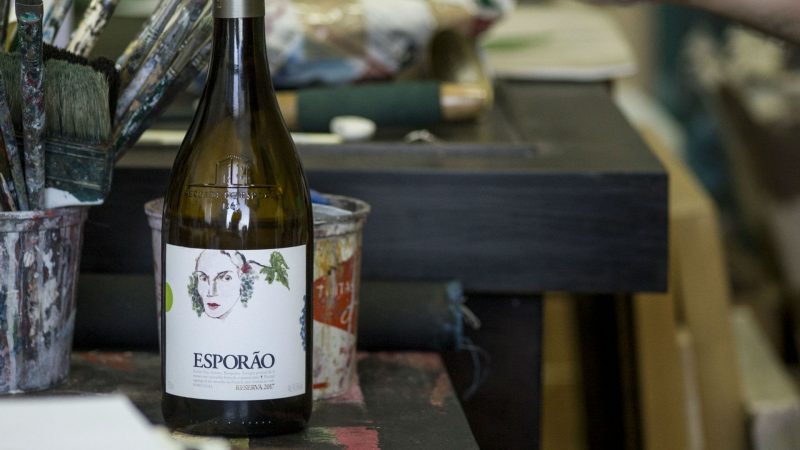
«To make this label I went to see paintings from art history created by other artists that presented Bacchus and the whole history of wine. Bacchus, by Caravaggio, O Fado, by Malhoa, the Triumph of Bacchus, by Velazquez. This was a classic and recurring theme in classical painting, which was associated with pleasure and wellbeing – an allegory of pleasant moments in life and the idea that those pleasant moments should be celebrated with wine. And I wanted these labels to show that side, to also convey that idea, that history.»
In watercolour and then acrylic, Albuquerque drew figures, vines and grapes that tell a “story of love and memory”. The characters blend with the grapes.
The artist wanted the label to be seen as a whole, as a unique piece – an artistic object, a work of art where they are no spaces between words and painting. Therefore the partnership with the designer Eduardo Aires and his team was very important to achieve this.
«I am used to working collectively. I like sharing the enthusiasm, discussing and embracing things with other people. Eduardo and his team were not only great in helping me understand the story of Esporão labels, but also in creating the final work. This dialogue and partnership were important to make the label work as a whole. To feel the label as a whole. There is a series of factors, how the label is placed, the design, how we go from the design to the label, which is crucial in the design.
The dialogue between art and design is what makes a label a success. It is still my watercolour, but it’s also an Eduardo Aires label. These two elements come together»
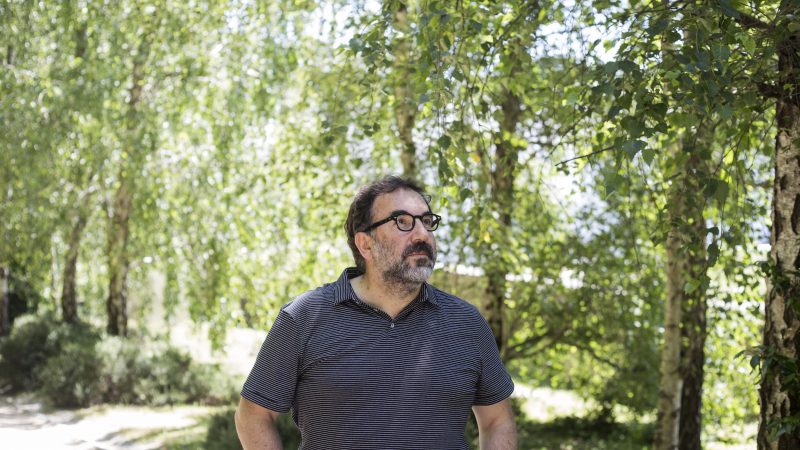
«Always ahead of his time, Albuquerque is one of those very special artists who can be compared with some wines that need time to be appreciated. As the years pass, he has gained maturity and recognition. His art makes more sense in the world today.» José Mário Brandão, from Galeria Graça Brandão, Lisbon
